Fall Factor 2
In early 2016, I wrote a short piece on Fall Factors. It is published as the article, Fall Factor. It was a brief article with a standard definition and a discussion of each of the following scenarios.
I am not certain when the term “Fall Factor” was first coined but it was common in the mid 1990’s and, as climbing instructors, we used it to describe the relative severity of a fall. There are several things to consider when facing a fall but two of the most significant are the potential to hit obstacles and the impact force on the climber as the rope arrests the fall.
The term “Fall Factor” provided climbers with a rough way to assess the relative impact force of a fall. It is essentially a ratio, calculated by dividing the fall distance by the amount of rope in service. The dynamic ropes used in climbing absorb much of the force in a fall and help to reduce the impact on the climber in a fall. Essentially, a higher Fall Factor indicates a greater impact force on the climber. The general rule of thumb has always been that this calculated ratio should stay below 1. In theory, the only time a climber should be facing a factor two fall is as they lead off on the first, unprotected moves of the upper pitches of a multi-pitch rock climb.
Since its first use, this term has been adopted by other rope user groups and applied to other situations with fall potential, and some confusion has resulted.
I have become aware of differing opinions around the situations depicted in B and D in the image below, where a technician is connected to a rope via a lanyard. While the operator is attached to a 1m lanyard, should we also consider the rope that the lanyard is attached to when assessing fall severity?
In this image, if we assume all ropes are identical (cut from the same roll) and that knots have been pre-tightened then fall factor for each scenario is calculated as:
A: 1 metre fall on 1 metre of rope = FF 1
B: 1 metre fall on 2 metres of rope (lanyard + rope) = FF 0.5
C: 1 metre fall on 2 metres of rope = FF 0.5
D: 2 metre fall on 3 metres of rope (lanyard + rope) = FF 0.66
The Industrial Rope Access Trade Association’s (IRATA) Code Of Practice (ICOP) defines Fall Factor as:
Fall Factor: Fall factors are used to measure the severity of a fall when using ropes or lanyards and are defined as the length of a potential fall divided by the length of rope or lanyard available to arrest it.
The ICOP also includes an image showing three potential falls of FF0, 1, and 2. Each of these falls has the technician attached to a rigid element.
However, if the technician’s lanyard is attached to a non-rigid system, the calculation of Fall Factor becomes more complex. For simplicity, many may ignore the rope in the system and incorrectly label the four scenarios as follows:
A: 1 metre fall on 1 metre lanyard: FF = 1 (should be FF 1 – the worst of the four)
B: 1 metre fall on 1 metre lanyard: FF = 1 (should be FF 0.5)
C: 1 metre fall on 2 metre lanyard: FF = 0.5 (should be FF 0.5)
D: 2 metre fall on 1 metre lanyard: FF = 2 (should be FF 0.66)
Initially the differences may seem academic however my concern is that the two interpretations lead to very different rankings of fall severity.
The difference becomes more apparent in the following image where there are 8 metres of rope in service above the technician on the left. While technician on the left has their lanyard attached at the level of their feet, the potential fall severity is actually less than the scenario on the right, where the technician has their lanyard at a higher position.
The technician on the left falls further however the 2m fall is arrested by the stretch of 10m of rope and thus the Fall Factor is only 0.2. The technician on the right only falls 1m however there is only 1m of rope to arrest the fall thus the Fall Factor is 1. Therefore the impact force will be significantly higher for the second fall. Assuming that the longer fall (FF0.2) does not result in hitting an obstacle, it is reasonable to say that the shorter fall (FF1) is more severe than the first.
While it is worth noting that low stretch ropes will result in a higher peak force than dynamic ropes, all rope in the system will work to reduce the impact force in a fall.
It is important that technicians consider the whole system and not just simply the relative height of their backup device.
Yes, it remains very important that rope access training continues to promote keeping a back device as high as possible but I think it is time to stop using the term Fall Factor in rope access unless the whole system is considered.
© Richard Delaney, RopeLab, 2017
Add a Comment
You must be logged in to post a comment.





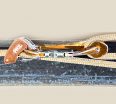



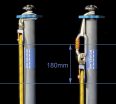
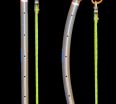
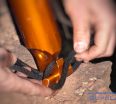


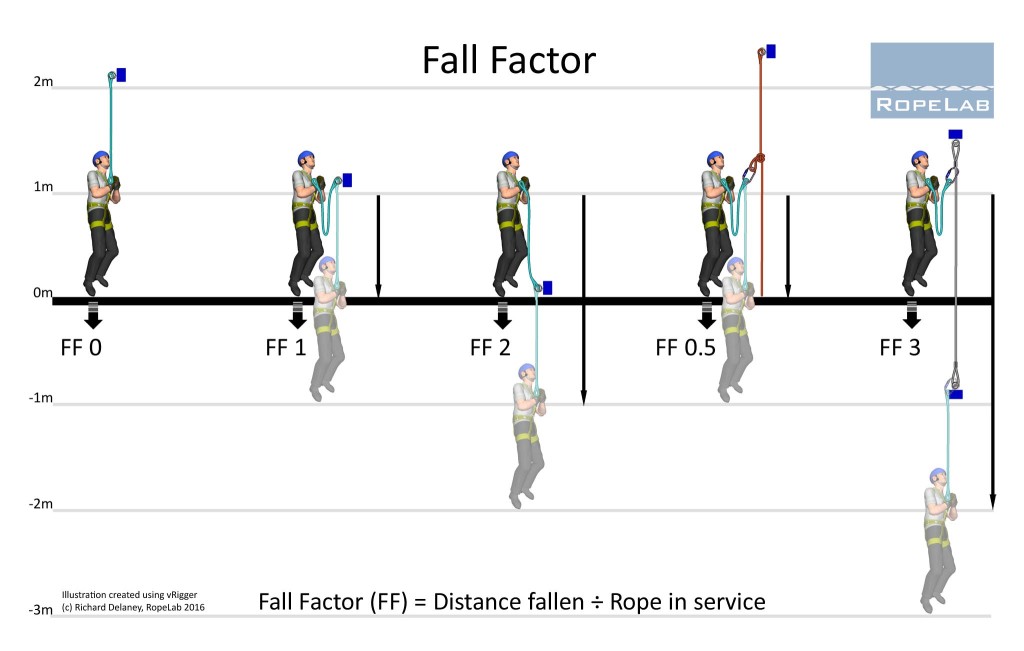
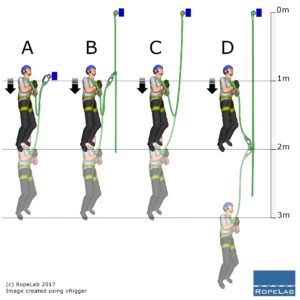
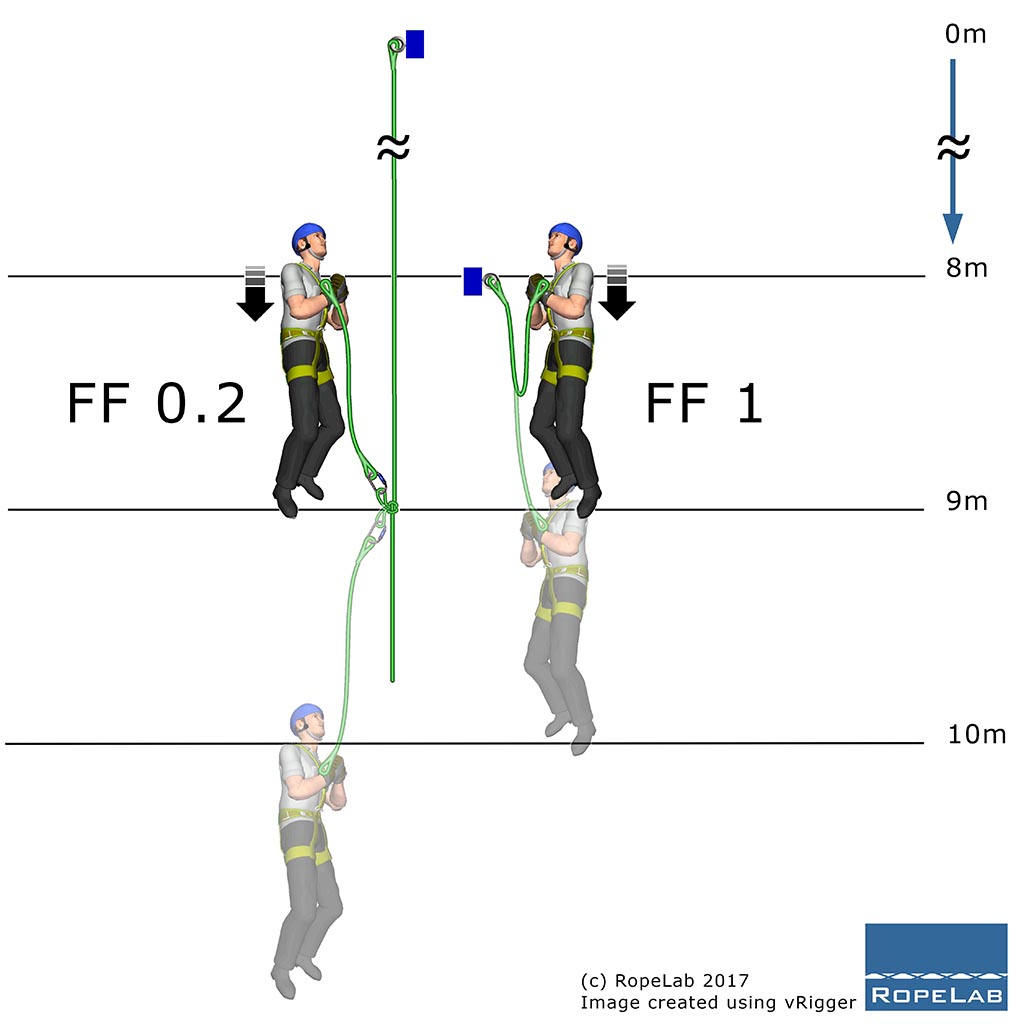
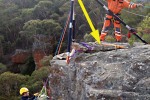



Can anyone confirm if a fall factor of 1 on a dynamic(climbing rope) would generate the exact same force regardless of fall distance
Fall factor 1 of 10 feet vs 100 feet for example. I’ve read that it would generate the same peak force but but a longer impact impulse and therefore do greater damage due to the force felt for longer duration.
I just haven’t seen actual tests
Thanks,
Patrick
Hi Patrick,
That is the theory: a 1m fall on 1m of dynamic rope should feel the same as a 10m fall on 10m of the same rope.
I am not aware of any actual tests though. I have a god friend who stepped off a prow with 30m of dynamic rope clipped to an anchor at his feet to prove a point. He says he “was a bit sore” for a few days after.
I did a few small drops myself in the lab and wrote these up at: Members: Human Drop Tests
These were on 11mm dynamic rope but I stopped at the ff0.5 as that was a peak of 4.29kN – but it did not hurt, I just thought I had enough data points for the comparison with Rescue Randy and the steel mass.
Richard